


Framed or unframed, desk size to sofa size, printed by us in Arizona and Alabama since 2007. Explore now.
Shorpy is funded by you. Patreon contributors get an ad-free experience.
Learn more.

- Baldwin 62303
- Baldwin VO-1000
- Cold
- No expense spared
- Tough Guys
- Lost in Toyland
- And without gloves
- If I were a blindfolded time traveler
- Smoke Consumer Also Cooks
- Oh that stove!
- Possibly still there?
- What?!?
- $100 Reward
- Freeze Frame
- Texas Flyer wanted
- Just a Year Too Soon
- WWII -- Replacing men with women at the railroad crossing.
- Yes, Icing
- You kids drive me nuts!
- NOT An Easy Job
- I wonder
- Just add window boxes
- Icing Platform?
- Indiana Harbor Belt abides
- Freezing haze
- Corrections (for those who care)
- C&NW at Nelson
- Fallen Flags
- A dangerous job made worse
- Water Stop
Print Emporium
Watch Your Fingers
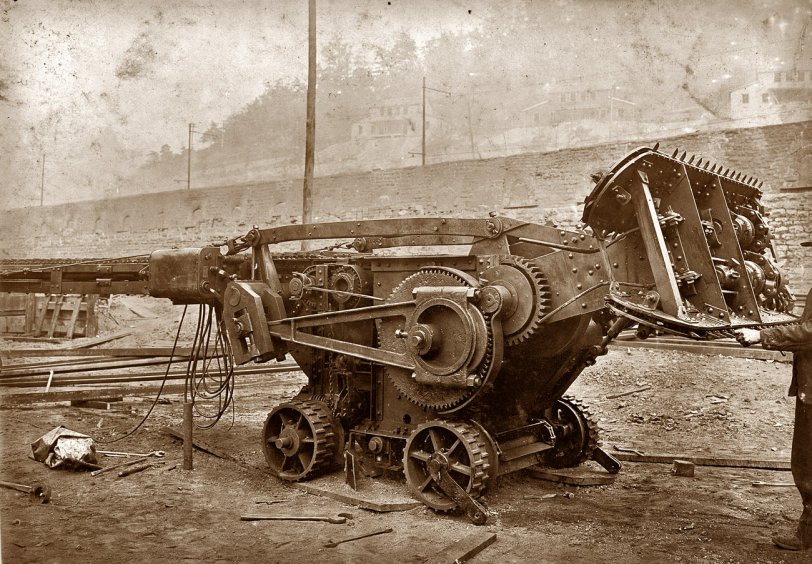
Machine used in mine that digs the coal and loads it on the car. With it three men can do the work of 50 in the old way. Yet they use boys to drive and trap. Gary, West Virginia. September 1908. View full size.
- 5 comments
- 38659 reads
Laura Mine: 1908
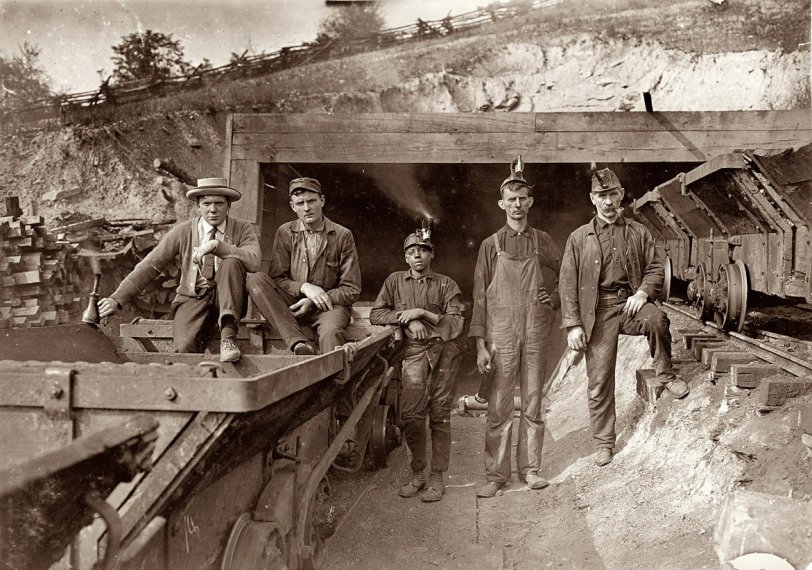
Bank Boss (on right), Brake Boy (in center). Laura Mine, Red Star, West Virginia. September 1908. View full size.
- 2 comments
- 35067 reads
In the Tunnel: 1908
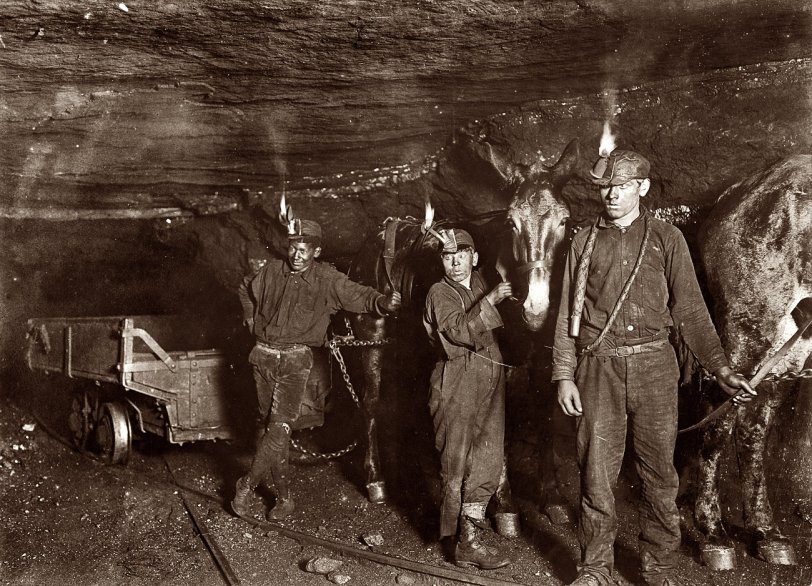
September 1908. Gary, West Virginia. "Drivers and Mules in a coal mine where much of the mining and carrying is done by machinery. Open flame on oil headlamps." View full size.
From the Web site of the Pennsylvania Historical and Museum Commission and the Museum of Anthracite Mining in Ashland:
- 6 comments
- Read more
- 52319 reads
Mobile Newsboy: 1914
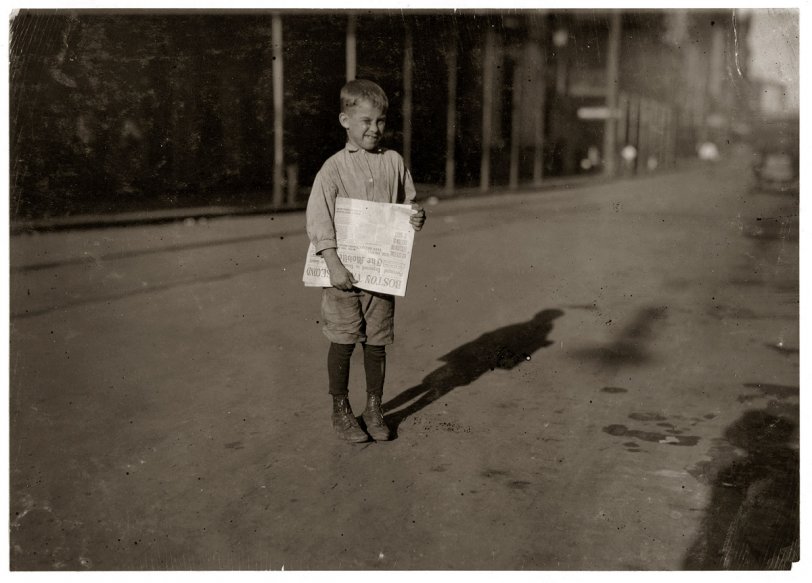
October 1914. Mobile, Alabama. "Young newsboy who begins work at daybreak." View full size. Photograph by Lewis Wickes Hine.
- 14 comments
- 46511 reads
Eugene Dalton: 1913
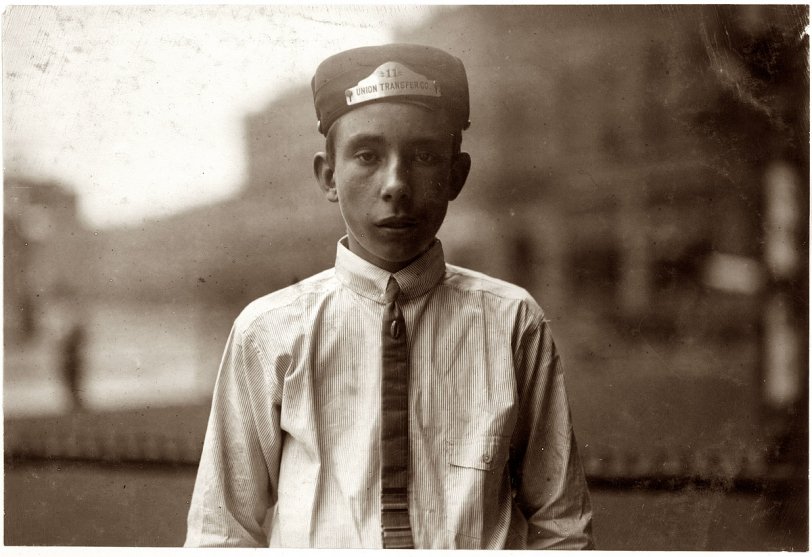
Eugene Dalton, November 1913, Fort Worth, Texas. Some results of messenger and newsboy work. For nine years this 16-year-old boy has been newsboy and messenger for drug stores and telegraph companies. He was recently brought before the Judge of the Juvenile Court for incorrigibility at home. Is now out on parole, and was working again for drug company when he got a job carrying grips in the Union Depot. He is on the job from 6 a.m. to 11 p.m. (17 hours a day) for seven days in the week. His mother and the judge think he uses cocaine, and yet they let him put in these long hours every day. He told me "There ain't a house in 'The Acre' (red-light district) that I ain't been in. At the drug store, all my deliveries were down there." Says he makes $15 to $18 a week. View full size.
- 17 comments
- 53057 reads
Shorpy Higginbotham: 1910
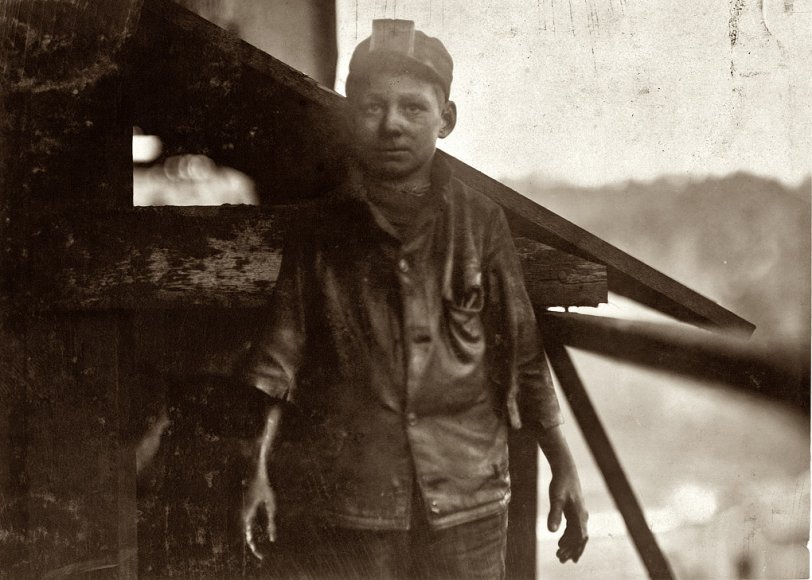
December 1910. "Shorpy Higginbotham, a 'greaser' on the tipple at Bessie Mine, of the Sloss-Sheffield Steel and Iron Co. in Alabama. Said he was 14 years old, but it is doubtful. Carries two heavy pails of grease, and is often in danger of being run over by the coal cars." Photograph and caption by Lewis Wickes Hine. View full size.
- 34 comments
- 146489 reads























